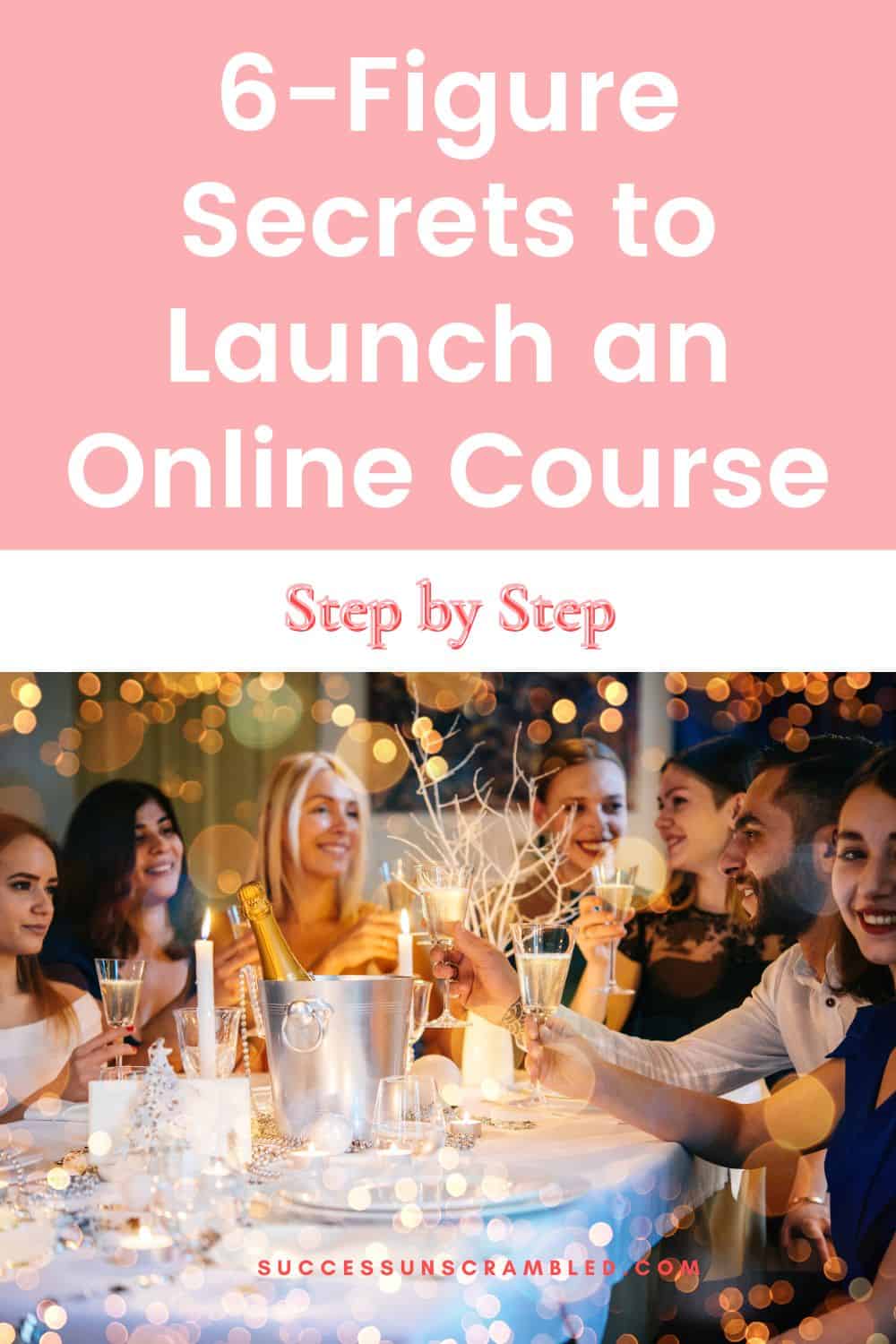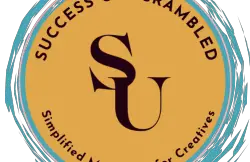Podcast: Play in new window | Download (Duration: 50:54 — 70.7MB) | Embed
Subscribe: Spotify | Amazon Music | Email | TuneIn | Deezer | RSS | More
This guide begins with a story about Sandra, a 25-year-old chef working at a local restaurant. She is known amongst her peers and customers as the “genius behind the recipe.”
To Sandra, cooking goes beyond simply heating up a collection of ingredients – it is an art that she’s perfected over the years. She loves cooking and is passionate about her craft.
Through her experience and networking within the culinary world, Sandra meets a man named Kyle: the owner of a five-star restaurant downtown who loved the cinnamon rolls Sandra’s restaurant is famous for.
Wanting to learn more about her and her style of cooking, Kyle offers her a lead role in the online culinary courses he manages for international students. Sandra began nurturing this idea of developing a course and selling it to people like Kyle and his students stationed all over the world.
As Sandra considers making her first course she realizes that there is a lot she doesn’t know about how to create one. Her knowledge of successful online course creation is not at the same level compared with her knowledge of cooking.
It’s clear that there are many people like Sandra, armed with the perfect potential to excel in creating courses online but lacking the basic knowledge required to launch their course content onto the internet in the best way.
Here’s how to launch an online course with ease and transparent comprehension.

What Are the Benefits of Launching an Online Course?
Perfect Source of Passive Income
One of the many advantages that come with launching an online course is that your presence isn’t needed in order to earn income. You’ll need to invest in marketing, but after that, the course pretty much runs itself. It doesn’t have to take up a lot of time.
The simple fact of only needing to do it once makes the whole process much more straightforward. If you are looking for the most effective way to earn a passive income with a smaller workload and less oversight, launching an online course is an ideal route to consider.
Expand Your Audience
Building monetary value is common sense: The bigger the market you cover, the more sales you accumulate. What better possible way can you reach more audiences if not online?
Online learning is available to anyone with an internet connection. By putting your course content online your list of potential students expands exponentially from just students in your local area,
Work Remotely
Like Sandra, it doesn’t matter where you are. Just like your students can be anywhere with an internet connection, so can you. You can do a lot of work creating your course in a coffee shop or have your launch day on vacation in Bali
You can be anywhere at any time and still make sales. If flexibility in where and when you work is important to you, creating an online course could definitely be the right decision for you.
Creating online courses is one of the most highly recommended businesses for many such as those stay-at-home moms who wish to make a living while still keeping an eye on their kids. It is also great for those who travel frequently or wish to start living the digital nomad lifestyle.
Self-Fulfilment
Online course creation is for people who find joy in the ability to impact others by sharing their knowledge of a particular niche. A great course is made by someone who has a passion for sharing their knowledge with others.
In any circumstance, you may have seen people quit their regular jobs so they may concentrate solely on creating course material on a particular topic.
To these types of people, creating this material is more of a hobby than it is a business. When they made their first online course they discovered the joy of teaching others and they keep that positivity going through each new course they create.
As the popular quote by Confucious goes, “Do what you love, and you’ll never work a day in your life.”
Let’s make sure you are set up for a successful launch. Here’s how to make it happen.
Launching an Online Course: A Step-by-Step Guide
When I set out to create an engaging course, I divide the creation process into smaller stages. This is perfect for quality assurance and makes me feel confident that every step of the way is covered in detail for my students.
The first phase, the Pre-launch phase, is the most labour-intensive. You will have to put in hard work now to set yourself up for an easier time later.
If you’re overwhelmed, I’ve broken it down into baby steps, and we can work on it together. Remember, I’ve got your back.
Phase 1: The Pre-Launch Phase
Structure Your Online Course
Structuring your online course is one of the most important aspects of getting your online courses on the radar.
Every niche, every topic, has an ideal course breakdown that makes the most sense for new learners. What’s your niche’s optimal outline? Think about the best way to deliver what you know to new students. What is the optimal order to teach your online course topic?
Good structuring doesn’t stop at the course creation stage; it extends to its marketing, upselling, and pre-selling stages for your course: it’s all about efficient planning. You’ll want to have the plan to reach your target market with your online class.
The outcome of improper structuring is high bounce rates and poor sales. Once you’ve put so much work into creating a course you’ll want to be sure that you have students in your class. I’ll teach you how to avoid common mistakes as we continue.

Educate Your Target Audience
To succeed in this aspect, focus on telling prospects about the benefits of the course. Everywhere from your first email to your online ads you will want to show your potential students what you are all about and what value you can offer them.
Let’s take Sandra’s case, for example.
Should Sandra want to educate her prospective audience, she would likely start by citing the advantages of her cooking and how lucrative it is to stick to the method she teaches in the course.
That way, she can shed light on the course without letting the cat out of the bag. Of course, you want to show people what they will learn in your course but also not give so much of your knowledge away they do not need to become students.
Build an Email List of Potential Customers
Many marketers are starting to believe that the email list method of lead generation is old school. That it does not have the big impact that it once did. However, this is not the case for everyone and email should still be a part of your online course launch strategy.
According to the latest report by Snov.io, 93% of B2B marketers still leverage this method for all their marketing activities, while 29% of online marketers still see it as the most effective channel of marketing. So, if you are serious about growth as an online course creator, you should build a current email list for your present and future campaigns.
You don’t need to spend much time on this.
There are many techniques to garner email signups, like a gated content system. This marketing technique restricts prospective consumers’ access to the course until they provide an email address.
Discount Method
Another method is the discount method. In this case, you will offer some sort of financial incentive whether it be a percentage off a course offering or a free printable in exchange for an email address. This is one of the more common methods and this is most likely because of its effectiveness. Plus, who doesn’t love a good deal?
Social Media Method
The least effective strategy is the social media method of building an email list. You all know how big the social media world is; the 2021 survey by Backlinko disclosed that there are approximately 4.48 billion social media users in the world today, with Facebook topping 2.85 billion users. Social media is huge.
So, do yourself a favour and leverage this channel.
To harness the power of social media you’ll need an engaged audience. Post content that resonates with your ideal students. Build as much fan base as possible. In your posts add a catchy call to action that allows you to collect emails easily.
Set Up Email Campaigns
The whole idea of building an email list is to one day use it for a powerful email campaign. To pull off this process, you need two things: a good email campaign tool (email service provider), and an email list obtained from your email list-building efforts.
I’ve noticed that there are many online course creators out there who are not familiar with how online tools work, so they find it a bit difficult to use email campaign tools. I’ll explain everything in detail, so you can make the best choices for your business.
The most popular tools in the email marketing realm are:
Flodesk:
This tool was made by creators for creators making it perfect for your online course business. It can be used both to design and send emails.
Flodesk also allows you to create sales and checkout pages to link to in those emails making it a truly multi-faceted tool. It also lets you continue to grow your email list with its opt-in forms.
Their email automation process is also intuitive and powerful. Flodesk also offers a free thirty-day trial.
Flodesk is popular among entrepreneurs offering creative services because they make emails beautiful.
Sendinblue:
This tool conducts automated marketing campaigns, advertised as a “separate SMTP bulk email marketing service.” This service is what propels the automated email function from website platforms like WordPress.
Like Mailchimp, it is mostly used by e-commerce merchants and B2B companies to reach out to more customers. Here, you can upload your email list on Excel, Microsoft Outlook, and more.
This is perfect for new people in the email campaign business since it comes with so much simplicity in its operations. If you are nervous about starting out with email marketing its user experience will reassure you and help you get the ball rolling.
What makes SendinBlue unique compared to other email service providers is the fact that they offer WhatsApp campaigns, heat map reporting, Facebook Ads integration, marketing automation and page tracking.
ActiveCampaign
One of my favourite email service providers is ActiveCampaign. When it comes to setting up complex and comprehensive funnel automations you’ll need a robust service that can trigger emails to go out based on what actions people on your list take.
Yes, ActiveCampaign can achieve all this and so much more. Here are a number of features that I enjoy about ActiveCampaign.
- Granular tagging
- Goals
- Integrations
- Triggers from forms, lists, tags and link visits
- Segmenting
- Reporting inside Google Analytics 4
- Evergreen campaigns
If you are interested in using ActiveCampaign in your business and you need help with the set-up and maintenance feel free to book some time in my calendar here.
Other email campaign tools:
GetResponse, MailerLite, AWeber, Moosend Ltd, Zoho Corporation, and more. There are many tools out there. Consider the one that will work best for you and the success of your online course.
The concept of an email campaign is complex. There are many branches, strategies, and tools that factor into a decision. The key is to know what you need, and what will perform the needed actions for your business reach and marketing.

Optimise the Sales Page
Research shows that companies that optimise their sales page will most likely get twice their current sales. This makes sense since the more people that see your page the more potential customers you have.
According to research by KISSMetrics, the more sales pages you create, the more sales you make. So let’s optimise your sales pages ASAP! Don’t miss out on course sales by not optimizing.
Formally, sales page optimization is a marketing process that ensures that your product or sales page is easy to locate on search engines.
Search engines have algorithms that rank the content they display and with some tweaking, you can place your page higher on the list and gain a larger amount of views from potential students.
When a sales page is properly optimised, all the relevant information on the product or about the seller is displayed for the prospective student to consume.
Sales page optimization doesn’t just happen; it requires the handiwork of a professional to make it really pop. And by pop, I mean views and conversions.
SEO Specialist
If you hire an SEO Specialist to boost your site’s visibility, they will do the following:
- Enforce your unique value proposition (UVP) or unique selling point (USP). This proposition directly explains what your offering is all about, and the value provided. It is all about what makes your online course a great way to learn the course content. What makes your online course a better idea than another?
- Write a clear and compelling meta description. A meta description is the following text after the site’s headline/title. It’s usually around 180 characters and is your first chance at capturing users’ attention. Think about a short and convincing summary of your offering– this is your meta description. This is what will display on the search results page and a good meta description is essential for getting potential students to click the link to your sales page.
- A/B Test your Call To Action. It’s not one-size-fits-all when it comes to CTAs. Testing out the slogan can drastically influence your sales. The best practice in SEO is to try different ways to state your CTA and use analytics tools to find which are most effective.
Create a Course Teaser
Course teasers or “course trailers” are compelling invites that use some media instruments to help the audience understand the information being communicated to them.
In addition to serving as a way to introduce potential students to what you have to offer they also generate excitement as you reach your launch date. You want students buzzing about starting your course and telling their friends.
There are many ways to pull this off; the most common being a webinar.
A webinar is a live interactive online presentation or conference. In a webinar situation, participants can actually ask questions, discuss topics, and get relevant information in real-time. The webinar method, or course teaser, is used by every industry, especially when they release a new product.
So, as someone hoping to get to a wider audience, it is only rational if you use the webinar method or course teasing. And we must add, though, webinars and social media ads work hand-in-hand, you will have to use the ads to send invites to prospective students/customers, and then use the webinar to pitch them about the content. And if it’s a free training, you must emphasize it in ads as well.
Send out an email to your list of subscribers for a live webinar. Then, appear on camera to sell your course and answer questions.
Phase 2: Launch
It’s your big day– launching! What an exciting time your course is going live. All of that hard work is paying off!
What’s your budget? Do you know your timeline? What’s your strategy?
Okay, too many questions, to the drawing board we go! Let’s go through what you need to do to really get your online course out into the stratosphere.
Hyping a product like an online course (whether paid or not) means telling your audience about its benefits in an exceptional way. You want them to be excited about what you have to offer and clear about what they will be learning and why it is a good value.
When pitching any new product, focus on the value provided rather than the deliverables. Inform about leading information, skills needed, and the 411 on what’s included in the course without giving away your secrets for free!
You’ll want to have a well-coordinated marketing strategy. Consider where you will be placing your ads and what your budget will be. Consider investing in Google Ads as well as social media ads.
Speaking of social media ads don’t neglect your free social media accounts. Though Facebook Ads are powerful, marketing your Facebook page itself is good as well. Create good posts that engage your audience and have a clear call to action.
In addition to course sales being a call to action in your advertising don’t neglect a lead magnet that will grow your email list. You will be continuing to utilize email marketing at this time.
Some additional ideas include blog posts, being featured on other blogs and social media accounts, and podcast appearances. Really get the word out there about your course launch. You want to create excitement and really start out strong.
Phase 3: Post-launch
All the email lists you have built, and all the contacts you have created on your social media page, still have important roles to play even after the end of your sale.
You have probably not converted all of them to students after all. They have shown interest in what you have to offer so keep engaging with them to get them enrolled in your course.
In fact, some of the key post-launching techniques include gathering feedback and upselling. This is how you make your course better and more sustainable over time.
Upselling means offering a higher-priced program (like 1:1 coaching) after the official closing of the former sales.
What differentiates a normal selling process from upselling is that upselling comes with a higher value and is more expensive.
The advantage of this is that it will even yield more profit, and continue to increase your reputation. If your first online course was productive for you and your students, why not create more?
Example
For example, if I sell a course for $100 about plants. Students learn everything about plants, flowers, and growing their own flora and fauna– and they love it! I can upsell these students by marketing an add-on to the course about soil irrigation techniques or how to grow their own spice plants. See how that works?
Consider what you can tack on as bonus value to your current offering. Chances are good your students want to continue to grow their knowledge. Make sure you are ready to fulfil that need.
And, don’t sleep on feedback.
Feedback is compelling; it’s a major driving force in an upselling process. What did well and what fell flat? Make improvements, and launch further updates to stimulate sales on improved products.
If your students are consistently telling you that they felt they had no way of gauging their progress throughout the course then add quizzes. If they felt that they learned more than they expected add that to your marketing. Use their feedback to both convert more students but also to improve what you have created.
Handy Launch Checklist
Having a launch checklist is one of the secrets to reducing human error and increasing the possibility that your launch will be successful.
Step 1 (12 weeks out)
- Map out your course content (don’t create your course just yet)
- Outline the features and benefits
- Create the messaging for the content strategy
- Write/gather all the content for the launch including social media images, captions, hashtags, emails for each stage of the launch, landing pages, sales pages, slides for the webinar, testimonials and lead magnet
Step 2 (10 weeks out)
- Build out the entire funnel for the course launch, integrate it with other pieces, optimise it and test it (this includes your email service provider, landing page platforms, checkout carts, tags, etc)
Step 3 (8 weeks out)
Start the pre-launch process by promoting your lead magnet so that you can grow your email list of potential students
Step 4 (4 weeks out)
Start the pre-launch process by promoting your webinar, 5-day challenge or other hype events so that you can grow your email list of attendees/participants
Step 5 (2 weeks out)
Run the hype event and open the cart
Step 6 (1 week out)
Close the cart and create the first lesson of your course then release it to your buyers

When Should You Go Live With Your Course?
As soon as the first lesson is ready, take it live.
Yes, you heard that right. You should make it available as soon as possible.
How fast do information and advancements in your niche evolve? In tech, the information and processes are ever-changing; a minute delay can lead to so many changes that render the entire course obsolete.
Delay is dangerous in this business. Making your courses available ASAP is the best precautionary measure.
Additionally launching the course allows you to improve the course and generate more buzz. As we covered before, feedback from students is a powerful tool. Those early students can help you figure out what is and isn’t working and allow you to make changes.
You can use their testimonials as a selling point on your sales page. They can write reviews if you are offering your course on an online course marketplace like Udemy.
Don’t forget word of mouth. If your course content is valuable these early students are sure to help spread the word for you.
Conclusion
Launching your online course is a phase-by-phase process that absolutely rocks if you take it in stride. It’s your creation, and once you have it up and running, it does the work for you, basically. You know that you have valuable knowledge and you are passionate about sharing it with others.
Before you head out and get creative, let’s recap. You want to be ready for the best successful launch of your online course offering after all.
The structure is everything. Don’t put the cart before the horse, map it out correctly and strategically with the logical flow of the content.
You want to deliver high-quality and high-value material to your students after all. In addition to letting down your students a poorly designed course won’t generate additional sales.
Launch via email lists and webinars. Your target audience wants to ask questions before they buy and you should be present for the delivery.
Get the help you need with launching, and don’t stop when you’ve completed the launch. Keep in stride with current market trends and ride the wave.

